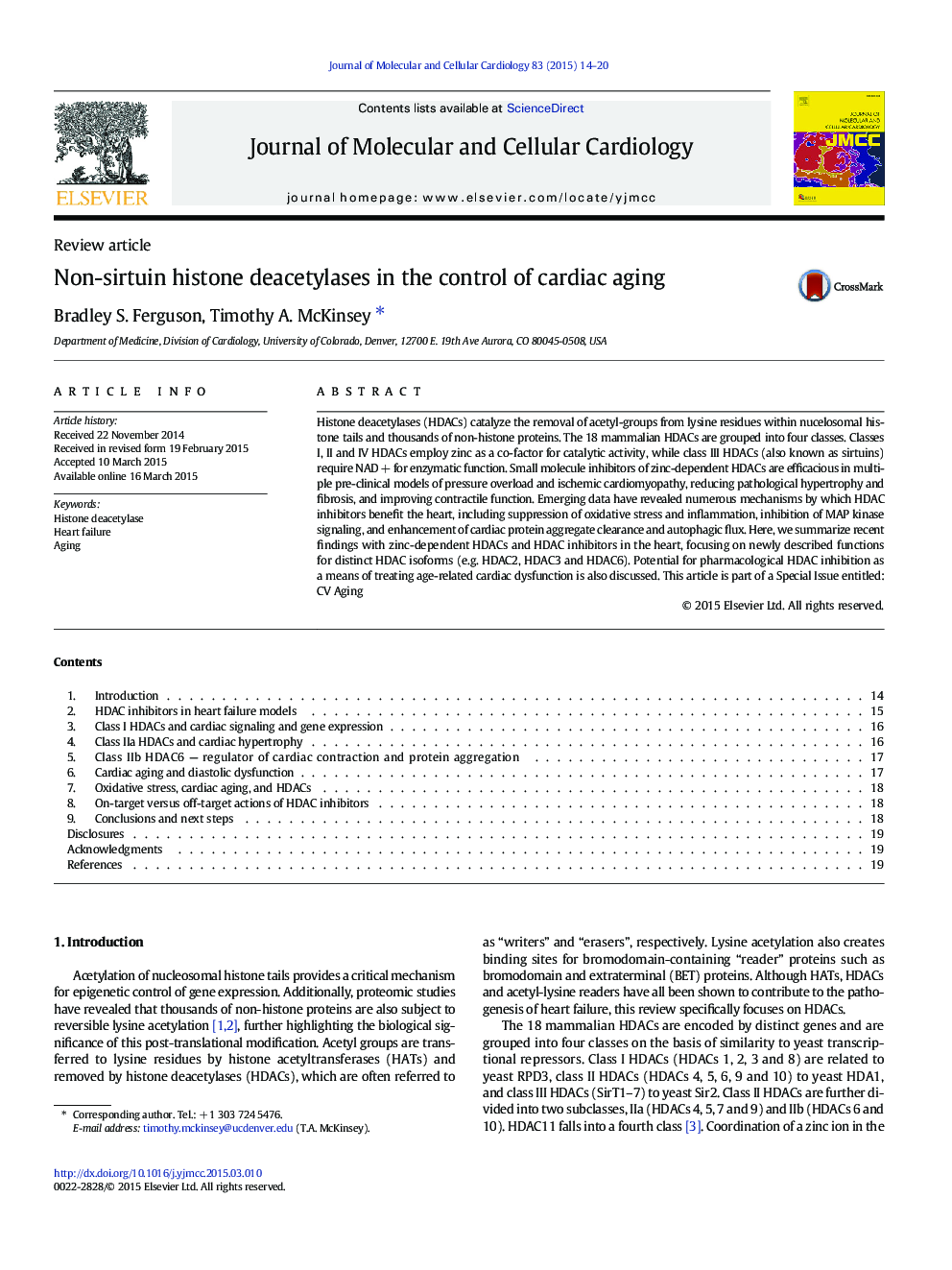| Article ID | Journal | Published Year | Pages | File Type |
|---|---|---|---|---|
| 8474291 | Journal of Molecular and Cellular Cardiology | 2015 | 7 Pages |
Abstract
Histone deacetylases (HDACs) catalyze the removal of acetyl-groups from lysine residues within nucelosomal histone tails and thousands of non-histone proteins. The 18 mammalian HDACs are grouped into four classes. Classes I, II and IV HDACs employ zinc as a co-factor for catalytic activity, while class III HDACs (also known as sirtuins) require NADÂ + for enzymatic function. Small molecule inhibitors of zinc-dependent HDACs are efficacious in multiple pre-clinical models of pressure overload and ischemic cardiomyopathy, reducing pathological hypertrophy and fibrosis, and improving contractile function. Emerging data have revealed numerous mechanisms by which HDAC inhibitors benefit the heart, including suppression of oxidative stress and inflammation, inhibition of MAP kinase signaling, and enhancement of cardiac protein aggregate clearance and autophagic flux. Here, we summarize recent findings with zinc-dependent HDACs and HDAC inhibitors in the heart, focusing on newly described functions for distinct HDAC isoforms (e.g. HDAC2, HDAC3 and HDAC6). Potential for pharmacological HDAC inhibition as a means of treating age-related cardiac dysfunction is also discussed. This article is part of a Special Issue entitled: CV Aging
Related Topics
Life Sciences
Biochemistry, Genetics and Molecular Biology
Cell Biology
Authors
Bradley S. Ferguson, Timothy A. McKinsey,
